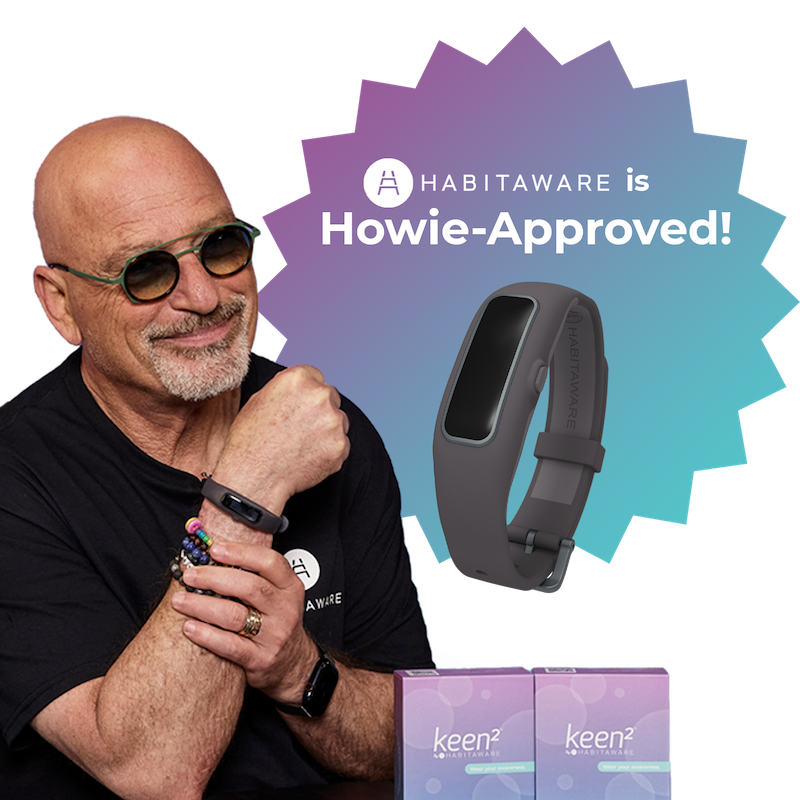by Amber Bodeur, Keen Family member
Before we start – a few words from Team HabitAware:
I often say “secrets make you sick.” Hiding my trichotillomania made the cycle of mental anguish so much worse than it needed to be growing up. It is my hope you find a way to open up about your compulsive hair pulling (trichotillomania), skin picking (dermatillomania) or other body focused repetitive behavior (BFRB) because recovery does not have to be a lonely road!
In today’s guest post, our Keen family member, Amber Bodeur, who’s been “Conquering with Keen," now shares how she found the courage – and the support – to start a support group in her hometown.
Here’s to coming together under common pain for the common goal of recovery!
Thank you, Amber!
wishing you all love, strength + awareness,
Aneela & the HabitAware team

According to the statistics, my town in Connecticut of 25,000 people had to have 1,000 others with BFRBs. Yet, I only knew one other girl in my high school that was open about her trichotillomania. I had to find those other 999 – and I knew I had to help other people.
After some research on how to help out in my community, I decided I wanted to start a support group. I started out by making a page online for “BFRBCT.” I made separate tabs for more information, outings, meetings, and resources. Next, I went on The TLC Foundation for BFRBs website and filled out a form for the group. You can also find a support group in your area – or start one – from the BFRB.org site! Within a week, the foundation reached out to me and guided me through every step. As excited yet nervous as I felt about “leading” a group of people, I also knew I had a great support system behind me. Through monthly support group leader calls, I am able to learn from other leaders and ask for advice on how to improve the conversations and quality of my group.
< See how others are improving their nail biting, skin picking and hair pulling: Reviews from the Keen Family >
Here are some tips on how to start a support group in your community, whether it be back home or at college:
-
 Target a certain group of people. When a group is open to all BFRBs, all ages, parents, friends, supporters, it can be difficult to maintain a conversation, find common topics for discussion, and may be intimidating for some. Limiting the group to just trichotillomania or dermatillomania, having only parents of kids with BFRBs, keeping it 18+, or allowing only those under 16 to bring a parent are all ideas on how to maintain a group of relatable individuals.
Target a certain group of people. When a group is open to all BFRBs, all ages, parents, friends, supporters, it can be difficult to maintain a conversation, find common topics for discussion, and may be intimidating for some. Limiting the group to just trichotillomania or dermatillomania, having only parents of kids with BFRBs, keeping it 18+, or allowing only those under 16 to bring a parent are all ideas on how to maintain a group of relatable individuals. -

 Don’t be discouraged if no one shows up to a meeting. If no one shows up, use that one hour to work on something you’ve been meaning to get done. That is your self-care hour!
Don’t be discouraged if no one shows up to a meeting. If no one shows up, use that one hour to work on something you’ve been meaning to get done. That is your self-care hour! -
 Reach out to The TLC Foundation for BFRBs as soon as you are ready to start a support group. They provide endless resources to support you in any and every way they can. From helping you get started to hosting monthly video calls with other support group leaders, you will never feel frustrated or alone as a support group leader.
Reach out to The TLC Foundation for BFRBs as soon as you are ready to start a support group. They provide endless resources to support you in any and every way they can. From helping you get started to hosting monthly video calls with other support group leaders, you will never feel frustrated or alone as a support group leader. -
 Tell everyone. As soon as The TLC Foundation for BFRBs includes your group on their website, you’ll start receiving emails requesting more information. In addition to the people who find out about your group online, it is also important to spread information via word-of-mouth. Whether you tell your hairdresser, doctor, therapist, friends/family, or anyone else that knows about your BFRB about your group, you will be shocked by the amount of people who reach out to you!
Tell everyone. As soon as The TLC Foundation for BFRBs includes your group on their website, you’ll start receiving emails requesting more information. In addition to the people who find out about your group online, it is also important to spread information via word-of-mouth. Whether you tell your hairdresser, doctor, therapist, friends/family, or anyone else that knows about your BFRB about your group, you will be shocked by the amount of people who reach out to you! -
 Keep communications simple. In the beginning, I used a website to announce meetings and outings. I made it all organized and fancy for prospects or members. I would update the website weekly and put together pictures, quotes, and summaries in pretty fonts. However, I later realized the members preferred when I announced the meetings and outings with a simple e-mail!
Keep communications simple. In the beginning, I used a website to announce meetings and outings. I made it all organized and fancy for prospects or members. I would update the website weekly and put together pictures, quotes, and summaries in pretty fonts. However, I later realized the members preferred when I announced the meetings and outings with a simple e-mail!
BFRB recovery is not an overnight achievement. It’s a way of life. It takes patience, self-love, perseverance, and SUPPORT!


